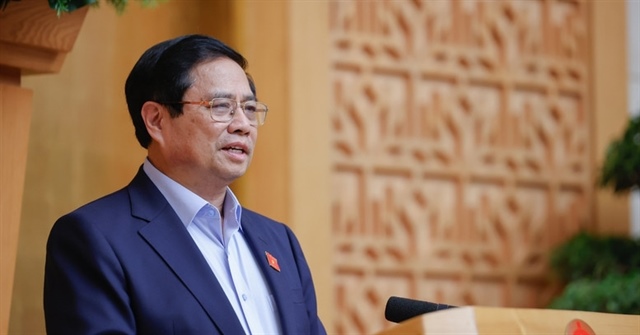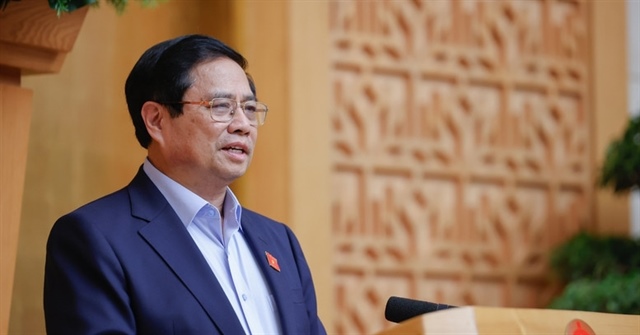On May 9, Prime Minister Pham Minh Chinh chaired a government meeting on the reorganization of administrative units at all levels and the development of a model for a two-tier local government structure.
At the meeting, the Steering Committee also estimated the savings in salary and administrative expenses for the period from 2026 to 2030 nationwide due to the reorganization of administrative units and the establishment of a two-tier local government structure. They also estimated the costs of implementing policies and benefits for those who will retire early and those who will be affected by the changes.
Prime Minister Pham Minh Chinh agreed to finalize the government reports to be submitted to the National Assembly and its Standing Committee regarding the reorganization of communal-level and provincial-level administrative units.

Prime Minister Pham Minh Chinh chairs the meeting. Photo: VGP |
According to the Prime Minister, alongside the reorganization of administrative units, the government and ministries must actively develop and issue documents and regulations to ensure a synchronized implementation. This should be done with the spirit of “one law amends multiple laws” and “one document amends multiple documents.”
Urgent issues should be addressed immediately, while matters requiring impact assessment should be studied further without striving for perfection or rushing through the process.
Additionally, policies should be developed for officials and civil servants who may be affected by the reorganization of the apparatus and local administrative units. This process should be accompanied by thorough ideological work to ensure high consensus.
The Prime Minister noted that after stabilizing the new apparatus and implementing the policies for redundant officials, the rearranged staff must be promptly deployed to ensure the smooth functioning of the apparatus without interrupting work.
It is expected that the number of provincial-level administrative units will be reduced from 63 to 34, and the number of communal-level administrative units will decrease from 10,035 to 3,321, a reduction of 66.91%. There will be no administrative units at the district level.
Implement benefit payments as soon as possible
The Prime Minister directed the swift finalization of the dossiers on the reorganization of the two-tier administrative units for submission to the National Assembly for approval. Once approved, the reorganization should be implemented immediately.
The Prime Minister assigned 26 task forces, led by members of the Government, to inspect, urge, and guide localities in this process.
These task forces are responsible for promptly allocating funds to pay benefits to those who opt for early retirement and those made redundant during the apparatus reorganization. They should provide guidance on advancing funds from ministries, sectors, and localities for these payments, with the instruction to do so “as soon as possible” to avoid bottlenecks. Additionally, they should offer guidance on arranging assets and facilities during the administrative unit reorganization.
Localities are requested to ensure that there are no gaps in providing public services to the people, organizations, and businesses.
Prime Minister Pham Minh Chinh instructed the provinces and communes to establish centers for public administrative services, offering administrative procedures independent of administrative boundaries, among other tasks.
After the reorganization, it is estimated that the number of officials, civil servants, and public employees at the provincial level will be around 91,800, a reduction of about 18,500 people. At the communal level, the number of officials and civil servants is expected to be over 199,000, a reduction of about 110,000 people. Across the country, more than 120,000 non-specialized staff at the communal level will cease their activities.
The Vinh















